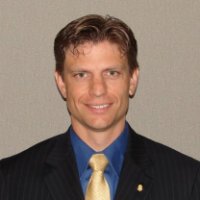A wave of business owners under the age of 35 has been bringing both new energy and great new destinations to the City of Manasass.
This activity comes at a time when the rate of entrepreneurship among young Americans has been falling across the U.S. While the Kauffman Foundation recorded the lowest rate of entrepreneurship in 17 years among people between the ages of 20 to 34, the City has been attracting this demographic.
Some of the forces driving this trend include a local culture of support for independent businesses, a collaborative business environment, and a strong sense of community.
There is no greater encouragement for an entrepreneur than the vote of confidence that support from the community can bring. Sean Arroyo, the CEO and co-founder of Heritage Brewing Company, used Kickstarter to see if locals would get behind his brewery concept.
Kickstarter is an online fundraising platform through which business owners can make sales pitches to raise money for their ideas. He met his goal and raised more than $20,000 from 166 backers three years ago. Support for Heritage continues to grow. A planned expansion will make it the second largest brewery in the state.
“It was funded mostly by people in and around Manassas and Northern Virginia,” said Arroyo. “It signaled to us that people want us here.”
Strong local support makes locating in Manassas an obvious choice for other business owners, too. Chase Hoover, co-owner of The Bone barbecue restaurant, says his family has been involved with businesses in Manassas for generations. Opening The Bone in the City was a “no-brainer” for him because he likes being in a community with so many independently owned businesses and strong support for buying local.
“The hospitality industry in Downtown Manassas is made up of many young entrepreneurs, which gives the city an energetic, unique flair you can’t find anywhere else,” said Hoover. “We love working with the other [local] restaurant owners to put on special events such as the weekly live music and numerous festivals throughout the year. It is truly a small town where everyone works together toward the common goal of bringing great food and a great experience to visitors and locals alike.”
Miguel Pires, the owner of Zandra’s Taqueria, also cites the spirit of the community as a factor for opening his business in the City. He says he was raised in his family’s restaurants – Carmello’s and Monza – and worked as a general manager for both establishments for 10 years. When the time had come to open Zandra’s, Pires chose Manassas because he “wanted to continue to expand downtown’s culinary experience.”
Chris Sellers, the owner of CJ Finz, credits the small-scale buildings in the historic downtown for giving restaurants a more intimate feel and an opportunity to focus on customer service.
“The restaurants here aren’t commercialized,” he said. “We get to build a connection to the community through each table that we serve.”
Business owners who are active with community organizations and civic groups strengthen that connection to the City even more. “People like me, Miguel, and others are excited about being the next leaders of the downtown,” said Sellers.
Entrepreneurs of any age can take advantage of area support services to get their business idea off the ground and join this community. The City’s Economic Development Department’s staff members are available to discuss the local economy, business ideas, great sites for locating new establishments, incentives, and the steps in starting a business.
Also, training and advice is available from George Mason University’s Mason Enterprise Centers, the Community Business Partnership, and the Flory Small Business Center (by referral).
Coming to a commuter lot near you this winter (if it snows): A jet-powered snow melter.
The Virginia Department of Transportation gave us an annual look at how they plan to do battle with Old Man Winter this year. It’s the agency’s job to keep more than 17,000 lane miles in Prince William, Fairfax, and Loudoun counties clear of snow and ice. About half of those roads are major highways and heavily-traveled arterials while the other half is neighborhood streets.
VDOT last year spent $128.5 million on snow removal in Northern Virginia — more than double the $50.5 million budget. This year, VDOT has $70.7 million to spend on snow removal. A series of winter weather outlooks published this week, including one on Capital Weather Gang, indicate at least one major winter storm for our region this season.
The state has an online website that tracks what streets have been plowed after it snows. It’s a popular feature that VDOT continues to urge residents to use.
“Each year, we strive to improve our winter operations both on the road and behind the scenes,” said Branco Vlacich, VDOT’s maintenance engineer for northern Virginia in a statement. “We continue to encourage residents to use the website for real-time information on their neighborhoods during snow storms. Over two years, we’ve seen hits to the site increase while customer calls decrease, as residents check road conditions, locations of our trucks and the progress of our crews.”
Residents in Prince William, Fairfax, and Loudoun may go to the site, enter their address, and see whether or not plowing in their neighborhood has begun or has been completed. They can also track the locations of snow plows.
The agency also listed some tools in the snow removal fight to be used this year:
A jet-powered snow melter for park-n-ride lots where snow piles can block spaces.
Seven high-pressure flush trucks clear snow and ice around the bollards separating the I-495 Express Lanes and regular lanes.
Two front loaders with 20-foot blades plow interstates during severe storms.
Speed-activated anti-icing equipment puts the right amount of material on the road.
VDOT will also continue to pre-treat 850 miles of highway before the first snowflake falls.
350 lane miles on interstates—including bridges and ramps prone to freezing such as the Springfield interchange and Capital Beltway at Route 1—with liquid magnesium chloride.
500 lane miles on major roads, such as Fairfax County Parkway, routes 1, 7, 28, 29, and 50, are pre-treated with salt brine. Brine (77 percent water, 23 percent salt) prevents ice from bonding to the road surface, reduces the need for salt to melt ice, is kinder to the environment and can lower snow removal time and costs.
The agency will also deploy more employees to monitor snow plowing operations, and will continue a 2-year test a brine mixture that is used to pre-treat roads. Using brine to treat roads has been successful in western U.S. states and it could reduce the need for salt use here in Virginia, according to a VDOT statement.
Editors note: This paid promotional post was written by Potomac Local in collaboration with Home Instead Senior Care of Manassas, serving Prince William and Fauquier counites.
Matching the right CAREGiver to the right client is a very serious and rewarding job.
Gail Earhart is the Relationships Manager for Home Instead Senior Care located in Manassas, which provides local CAREgivers to seniors in Prince William, Fairfax, and Fauquier counties.
“On a daily basis a lot of what I do is in the staffing department because we have clients on any given day…or up to any given week we could have up to 60 to 70 shifts to fill,” said Earhart.
However, filling the slots with CAREGivers isn’t the easiest task to complete. One of the biggest challenges Earhart and the staffing team faces when filling shifts is that each client has different needs, and each CAREGiver has a different preference.
“So you might have a client who has a dog or a cat and then you have a CAREGiver, who won’t go to somebody who has a dog or a cat,” said Earhart. “Or you have a client who has Alzheimer’s so we have to ensure that we have a CAREGiver, who’s seasoned working with somebody who has Alzheimer’s.”
Consultation
Finding out the preferences and needs for both client and CAREGiver are important steps in delivering quality care. It starts at the beginning by consulting with new clients by Client Care Coordinators.
“Our Client Care Coordinators go out, and when they’re doing a consultation they find all this information out,” said Earhart. The Client Care Coordinators then return and tell staffing what exactly their client needs and the appropriate type of CAREgiver for their client.
Home Instead has 200 CAREGivers, which seems like a daunting task when matching the right CAREGiver to the right client. However, members of staffing know the CAREGivers so well they make it their job to know who is the right fit for their client.
Recently, Earhart completed a consultation of a client who was described by his daughter as “narrow minded” and “stubborn.”
In this case, the family requested a CAREGiver who was assertive and not someone young who the client can potentially take advantage of. So Home Instead matched the correct CAREGiver to the client who would make sure the client did what might seem the most basic of things, eat regular meals and shower on a regular basis.
Filling specific needs
Sometimes, clients can be very particular about finding the right CAREGiver. And that’s OK. Many times families prefer non-smokers in the home or simply a companion for their loved one.
“Sometimes they say ‘I want a really talkative CAREGiver. Somebody’s who’s going to sit with my mom for three hours and just talk about life’ and we have that and that’s part of our service,” said Earhart.
Much of a CAREGiver’s role is “filling that gap” when a family member needs to go out when they can’t be with their loved one. Which is why it’s so important for a perfect match to exist between client and CAREGiver.
“The last thing I want to do is send somebody in there who’s a very quiet CAREGiver. We have those too so we want to make that perfect match,” said Earhart,” …but we tell every client if we don’t send the correct CAREGiver, if there isn’t a match, it doesn’t feel like a good fit, call us because we can send you somebody else.”
Successfully matching clients and CAREGivers can sometimes be an “ongoing process,” but when that perfect match happens and the client or client’s family sends positive feedback there’s no better feeling.
A care consultation can take up to an hour and a half .
“The first probably 45 minutes is just talking to the family, getting to know the family, finding out what their needs are. We have a complete form [and] we’re taking notes the entire time,” said Earhart.
It’s within these first 45 minutes do Client Care Coordinators know whether or not the client will be signed up. The last 30 minutes is dedicated to paperwork but discussion still happens between the family and client and Client Care Coordinator.
The best and most common questions families ask Client Care Coordinators include:
What type of CAREGiver will be sent to me?
Are they certified, bonded, or insured?
Do CAREGivers do drug testing?
Will the CAREGiver be permanent or temporary?
“Obviously our goal is to have permanency so if somebody is scheduled Monday, Wednesday, Friday they want the same person,” said Earhart.
However, it’s not a guarantee that clients will always have the same CAREGiver. It may take between two to three weeks to find the best two CAREGivers for clients in case one CAREGiver needs to call out in the future.
Some clients need around the clock care and see up to three CAREGivers each day.
“When we have a 24/7 client, we work on having 24/7 teams. We’ve had a client now for almost two years that has the same eight CAREGivers on that team” said Earhart. “They just rotate through the week and then the weekend.”
If its not working
It can be hard for families to initiate the conversation that a CAREGiver isn’t working out.
“We do get those phone calls and it might be ‘my dad’s just not hitting it off with this CAREGiver’,” said Earhart, “or maybe it’s something that the client unfortunately just doesn’t like about the CAREGiver and that’s okay too because not everybody makes a connection, not everybody makes a hit.”
To find out why a match isn’t successful, Earhart normally gets to the center of the problem. For example, if a family complains that the CAREGiver is on the phone too much steps will be taken to correct that and no further action needs to be taken. Or the family loves the CAREGiver but the CAREGiver can’t cook or complete a certain skill that properly fulfills the client’s needs.
“Jeannie Carroll is our CAREGiver Retention Coordinator and she has the best job here I think at Home Instead because she works directly with the CAREGivers,” said Earhart.
Jeannie spends 30 days with the CAREGivers, accompanies them on their first shift, and supervises them for 30 days to monitor their progress.
Making it a success
What helps to make success more likely for both client and CAREGiver is that initial intake and assessment that has all of the client’s needs and preferences. When a CAREGiver is first assigned to a client, they must read everything about that client and if a CAREGiver’s preferences don’t match with the client’s, another CAREGiver can be assigned before one is sent to the client.
Journals are provided to the family and client to take note of the daily care received and if something raises questions, Home Instead can be contacted. Phone numbers are not exchanged between client or the client’s family and CAREGiver so that everything goes through Home Instead’s office.
“No client is ever left without somebody, so whatever it takes we’re going to be there,” said Earhart.
Don’t be alarmed, but in case you hadn’t heard summer is over and the Thanksgiving season is here.
Now is the season where people make a special effort to recount all the things they are thankful for in their lives. For many, it has become a tradition to share this list at the dinner table on Thanksgiving before eating.
Being mindful of your gratitude helps make you a happier person and, as happiness is contagious, it will make others around you happier as well. While it’s a wonderful and fun tradition to practice during Thanksgiving, the benefits of gratefulness can be enjoyed year round.
However, being grateful and focusing on what you are grateful for isn’t enough.
It’s easy to neglect to use the phrase, “thank you,” but those two simple words carry so much meaning. Thank you can reinforce and strengthen bonds we share with others.
When you say thank you to the person who makes your lunch in the morning, to your child who finishes their chores, or to your favorite cashier ringing up your purchase you express that you value that individual. Regardless of how monotonous, simple, or mandatory the task is, it should always be acknowledged and appreciated verbally.
Remember, gratefulness spreads happiness, but how can you express gratitude if you never say “thank you?”
Why do people neglect to say thank you? There are probably a myriad of reasons beyond my scope of knowledge and it’s easy to compile a list of cynical reasons – but let’s not create an anti-grateful list during the season of gratitude.
Instead let’s challenge each other to say a sincere and genuine thank you every day. Say it 10 times. Say it 100 times. Thank you is a rare phrase that has meaning no matter how frequently it is repeated.
Once you start saying thank you to others you’ll instantly notice others will start saying thank you to you. If happiness is contagious, and gratitude creates happiness, then it shouldn’t be surprising gratitude is contagious as well.
I’d like to start this gratitude pandemic. From me and on behalf of the entire City of Manassas Park Department of Parks and Recreation, we’d like to thank you for all that you do. Even if we haven’t met yet, thank you. If we have met, thank you. Thank you for visiting our parks and our community center and giving value to the work that we do here. You are our community and we are here to work together to build our community up together.
To add further meaning behind our gratitude and to help spread our gratitude we are offering two specials this month. On Thursdays (through November 19) you can donate 10 non-perishable food items in order to receive 10% off a Basic or All-Access membership at the Manassas Park Community Center.
From November 27 through December 4, we will be launching our ‘Friends and Family’ promotion where we share our employee discount with all of you. During that week only, you can get a Basic membership for 25% off.
For more details please contact us at 703-335-8872.
New commuter bus service from Woodbridge to the Mark Center in Alexandria is delayed.
The Potomac and Rappahannock Transportation Commission on Monday said plans for new buses between Dale City and Lake Ridge to the Mark Center would start in mid-January, about a month later than originally planned. A new ramp from Interstate 395 to Seminary Road was supposed to have been constructed by this fall, but work continues the ramp, according to PRTC.
The new commuter service will begin as soon as the ramp opens.
Commuters will pay $8.30 for a one-way fare on for the bus, $6.20 if using SmarTrip. There will be four morning and evening trips for both the Dale City and Lake Ridge buses.
The Dale City bus will serve a commuter lot at Gemini Way, and stops along Dale Boulevard before proceeding to I-95. The Lake Ridge bus will serve commuter lots at Tacketts Mill, Minnieville and Old Bridge roads, and the Old Bridge & Route 123 commuter lot before heading north on I-95.
The Virginia Department of Rail and Public Transportation will pick up the cost of the new bus service as a means of mitigating congestion on I-395.
The transit service faces a $9 million shortfall that could hamper existing service by 2017. So far, local officials aren’t talking about it.
PRTC on Monday also announced small changes in service as part of its annual fall service change:
Manassas OmniRide buses will no longer serve Williamson Boulevard. Additionally, three more AM Manassas OmniRide trips will become express trips, originating at the Portsmouth Commuter Lot. This is in addition to the three express trips on the current AM schedule.
There will be minor map and timetable changes to some other routes.
The Natural Science and Mathematics Division at Northern Virginia Community College's Woodbridge Campus has partnered with Prince William County Public Schools and SySTEMic Solutions to offer on-campus Air Conditioning and Refrigeration dual enrollment courses to Prince William County high school students.
The program began this semester with students from Gar-Field, Freedom, Potomac, Woodbridge, and PACE East high schools. Five days a week the students attend HVAC classes at the NOVA-Woodbridge Campus in the morning and return to their respective high schools in the afternoon to complete their high school coursework.
Students will complete college-level coursework to achieve credits toward obtaining an HVAC-R and Facilities Services Technology Certificate by the time they graduate from high school. Prince William County Public Schools Supervisor of Career and Technical Education Doug Wright, NOVA Dual Enrollment Coordinator Courtney Hill, Dean of Natural Science & Mathematics Alison Thimblin, Assistant Dean of Natural Science & Mathematics Adam Johnson, Director of SySTEMic Solutions Amy Harris, and Rusty Jensen, of the NOVA Woodbridge faculty worked together to develop and launch the AIR Dual Enrollment program.
This article is FREE to read. Please Sign In or Create a FREE Account. Thank you.
Traffic is one the most common complaints from those who live around here. That means officers in the Prince William County Police Department Traffic Unit have job security.
The 21 police officers that make up the traffic enforcement unit are easy to spot on their blue motorcycles.
Many times you’ll see posted on the side of the road running speed checks using LiDAR, a device that uses lasers to scan a larger portion of a roadway full of cars coming and going, more so than standard radar speed detection.
The officers in this unit write hundreds of speeding tickets per month. It’s not because they’re avoiding fighing “real crime,” or that they’re trying to “fill a monthly quota” of written speed tickets, as the common misconceptions state. They’re out to keep drivers safe.
“It’s an uneasy feeling to get stopped by police,” said Master Police Officer Steve Bennett, who’s been with the Prince William County Police Department for 17 years.
Bennett sat in an unmarked police cruiser at the corner of Spriggs and Lindendale roads in Dale City. He used a LiDAR detector and scanned the field of oncoming and passing cars.
He picked his spot carefully. By the time drivers reach this spot, they should have been able to see the posted speed signs three times, said Bennett.
“We try to be as visible as possible. We don’t hide behind trees or behind signs,” he said.
Most cars traveled the posted 45 mph speed limit, or just a few mph over. A few cars traveled in packs but barely exceeded the speed limit.
A Prince William County school bus stopped in front of a daycare center, blocked traffic in the right lane while sitting with its yellow flashing lights on for about two minutes before putting on its red lights and discharging a child. Most drivers approaching the bus from behind saw yellow and correctly slowed down but passed the bus. Another approaching driver in the left lane saw yellow lights and incorrectly stopped, briefly halting traffic on Spriggs Road.
The bus and subsequent traffic obstruction wasn’t in the road long enough for Bennett to issue a warning. Bennett sees instances like these, and situations where drivers cut off other drivers by pulling out in front of them, and drivers texting behind the wheel all day long.
But just when he thought this stretch of Spriggs Road was safe, Bennett spotted a white Lexus traveling at 60 mph toward Saunders Middle School.
Bennet first spotted the speeder, and then used his LiDAR detector to confirm the infraction. He pulled into traffic and pursued the driver by putting on lights and siren. The driver pulled over into a right turn lane indicating he was coming to a complete stop, but then oddly pulled back out into the right travel lane and then came to a full stop.
Bennett got out of his car and approached the driver and asked him to pull into the school parking lot up ahead. The driver did.
“I don’t ask ‘do you know why I stopped you,” explained Bennett. “I feel like it’s trapping them into admitting something they did wrong.”
Now with the driver, Bennett showed the digital readout on the LiDAR detector that indicated he had been traveling 15 mph over the posted speed limit. Bennett then came back to the police car where he ran the driver’s license and registration with the help of a radio dispatcher.
Bennett wrote a ticket and presented it to the driver, and he was on his way. He would most likely repeat that process again before the day ends, he said.
Traffic on area roads is often congested, forcing commuters to spend hours traveling to and from work. When it’s moving, the LiDAR tool helps police officers scan the entire width of roads for speeders. It is especially helpful for officers patrolling the wider four and six lane roads in Prince William County.
The LiDAR system looks like a set of binoculars that an officer holds up and points toward traffic. A laser sends out 200 pulses per second across the roadway. Fifty pulses per second bounce back from moving vehicles, and those return pulses tell the LiDAR detector how fast the cars are traveling, said Bennett.
Police cars are also outfitted with traditional radar systems that can indicate the speed of vehicles traveling behind and in front of the officer. These tools, along with visual indicators, help police stop speeders.
When not doing speed enforcement, officers in the traffic unit assist patrol officers when responding to calls for help from county residents, and assist officers and fire and rescue crews called to the scene of traffic crashes.
One of those crashes involved one of their own when Officer Chris Yung on his police motorcycle was struck by a minivan and killed while responding to a call for help on New Years Eve 2012. Yung was the third Prince William officer to die in the line of duty since the department was founded in 1970.
Bennett urges drivers to leave the house earlier, to pad a little more “time and patience” into their commute.
“When you leave late, you get into the mindset of beating the clock, and you often say ‘now I’m late.’ I know because I’m the same way.” said Bennett. “But I’ve seen that if I leave earlier, and I know I’ve got an extra 10 minutes, I’m more apt to let someone merge in front of me so we can all get where we’re going.”
Volunteers are needed for the Dumfries Annual Christmas Parade and Tree Lighting Ceremony on Dec. 5, 2015.
The parade will start at noon, and the tree lighting will start at 5 p.m.
Volunteers will receive a t-shirt and have the opportunity to serve the community.
This article is FREE to read. Please Sign In or Create a FREE Account. Thank you.
1 Million Cups Meets the Media, Wednesday, Nov. 18, 2015
8:30 to 10 a.m. FREE! RSVP Today!
What makes a good news story?
How do I know if a news or features writer would be interested in my story, organization, business, or event?
What is the difference between “earned” media and advertising? Which one is better for me?
Many people who are tasked with getting out the word about events, happenings, and information about their businesses ask these kinds of questions all the time.
When looking for answers it pays to hear about what makes a good story from the editors and publishers of three media organizations in Prince William County.
On Wednesday, Nov. 18 from 8:30 to 10 a.m., please join us for a special edition of 1 Million Cups Prince William — “1 Million Cups Meets the Media.”
This hour and a half session will be a free, informative meeting designed to help you better understand how the local media industry works, and how to get a reporter’s attention.
Space is limited so be sure to RSVP online today.
Joining us will be:
Rebecca Barnes — Founder and Publisher of Prince William Living Magazine
Jason Grant — Communications Director for Prince William County Government, pwcgov.org/news
Uriah Kiser — Founder and Publisher of PotomacLocal.com News
1 Million Cups Meets the Media will be held at the Hylton Performing Arts Center located at 10960 George Mason Circle in Manassas, from 8:30 to 10 a.m.
Free coffee will be provided to attendees.
1 Million Cups Prince William regularly meets at 9 a.m. every Wednesday at the Hylton Performing Arts Center. The meetings are designed to foster entrepreneurs and support the growth of small business in Prince William County and Greater Manassas.




